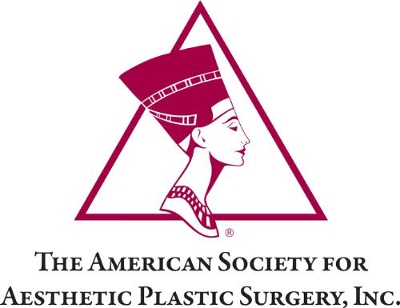 Botulinum Toxin Injections to the "11s" Between the Brows Produce Significant Patient Satisfaction Rates
Botulinum Toxin Injections to the "11s" Between the Brows Produce Significant Patient Satisfaction Rates According to FACE-Q Survery
NEW YORK,
June 28, 2016 /PRNewswire-USNewswire/ --
Botulinum toxin type A injections are the most common cosmetic procedure performed in
the United States, with 4.3 million procedures performed in 2015 accounting for 42% of all cosmetic procedures in that year, based on the Cosmetic Surgery National Data Bank Statistics from the American Society for Aesthetic Plastic Surgery, (ASAPS). According to a new study published in the
Aesthetic Surgery Journal, the official publication of ASAPS, patient satisfaction with their overall facial appearance increased by 28% with injections to the so-called "11s" (the glabellar rhytids which are the lines that appear between the brows as we age). The satisfaction rate was determined based on participating patients' completion of the
FACE-Q survey, a newly developed and validated patient-reported outcome instrument that can be used for measuring patient's own perceptions of cosmetic facial procedures. The survey consists of 63 questions asking patients to evaluate their overall appearance, age appearance, and the appearance of cheeks, nasolabial folds, lower face and jawline, chin and neck.
Dr.
Daniel C. Mills, President of ASAPS states, "The results of this study are not surprising and validate what we've suspected for quite some time. I see an ever-increasing influx of patients in my practice in
Laguna Beach, CA requesting botulinum toxin type A injections to the area between the brows and other areas on the face like the crow's feet and forehead as a preventative anti-aging or, pre-aging measure from patients in their 20s up to their 70s. It's a quick nonsurgical fix that packs a powerful punch and this new study reaffirms the efficacy of botulinum toxin type A and the satisfaction it brings to patients," he explains.
The study's authors examined 57 female patients who completed the FACE-Q survey. After the baseline survey, the patients received injections of one brand of botulinum toxin type A, (Botox, Dysport or Xeomin) in the region between the brows. Two weeks post-injection, the patients completed the FACE-Q survey again. The percentage changes in patient responses from the first to second surveys were assessed to determine how the injections affected patient satisfaction with their facial appearance.
Patients stated that they believe they look an average of 5.6 years younger post-injection with any of the botulinum toxin type A products, (Botox, Dysport and Xeomin). The average age of the 57 patients with pre- and post-neurotoxin FACE-Q responses was 49.6 years (range of 32 – 75 years old).
Table 3. Post-Neuromodulation Change in Satisfaction with Facial Appearance Overall
*Average percentage change, pre- to post-neuromodulation, in the questions and overall Rasch score for the satisfaction with facial appearance overall section.
"This indicates that patients' satisfaction with their overall facial appearance was statistically significantly greater after receiving the injections, and certainly accounts for the continued success of neurotoxin popularity to reduce the signs of aging," states Dr.
Ivona Percec, the study's senior author.
To view the complete study, visit the
Aesthetic Surgery Journal site.
About the Aesthetic Surgery Journal Aesthetic Surgery Journal is a peer-reviewed international journal focusing on scientific developments and clinical techniques in aesthetic surgery. An official publication of the American Society for Aesthetic Plastic Surgery (ASAPS),
ASJ is also the official English-language journal of many major international societies of plastic, aesthetic and reconstructive surgery representing
South America,
Central America,
Europe,
Asia, and the
Middle East. It is also the official journal of Canadian Society for Aesthetic Plastic Surgery and The Rhinoplasty Society.
ASJ was indexed with MEDLINE/PubMed in 2008 and covered by the Thomson Reuters' Journal Citation Report since 2011.
ASJ's current Impact Factor is 2.502. In the 2015 JCR,
ASJ ranked 53rd out of 199 journals in the overall surgery category.
ASJ is presently ranked #1 among all aesthetic surgery journals and #2 among all plastic surgery journals.
 Register Today! How to Successfully Open a Medical Spa--Northwest: September 19-20, 2016How to Successfully Open a Medical Spa--Texas: November 6-7, 2016Southwest Medical Spa Regulatory Workshop: December 5, 2016
Register Today! How to Successfully Open a Medical Spa--Northwest: September 19-20, 2016How to Successfully Open a Medical Spa--Texas: November 6-7, 2016Southwest Medical Spa Regulatory Workshop: December 5, 2016





 Botulinum Toxin Injections to the "11s" Between the Brows Produce Significant Patient Satisfaction Rates
Botulinum Toxin Injections to the "11s" Between the Brows Produce Significant Patient Satisfaction Rates 
